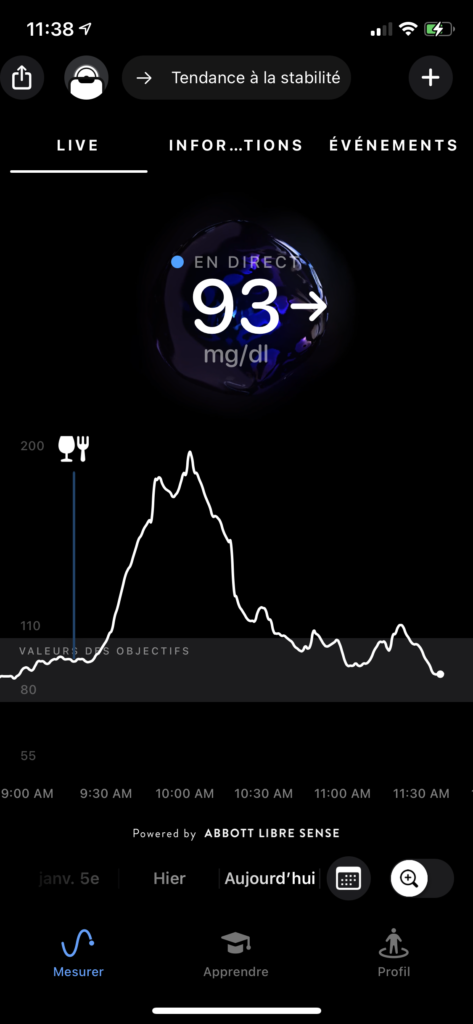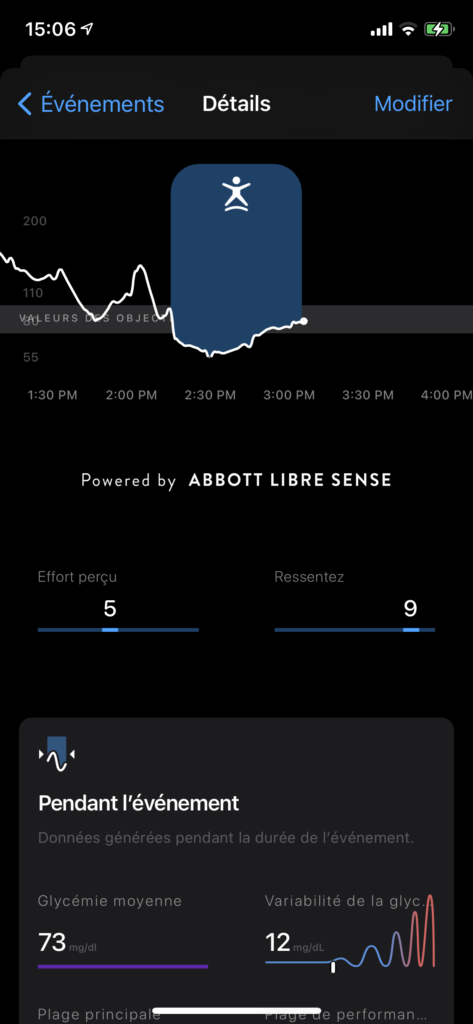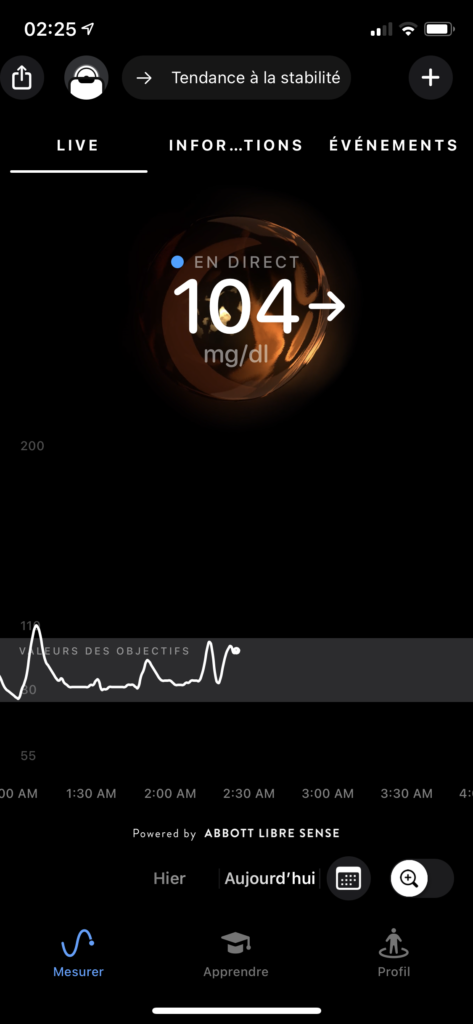I’ve wanted to try a continuous glucose monitor (CGM) for a long time. I’ve been listening to a lot of Peter Attia’s podcasts and this topic comes up regularly. I’m very cautious about what Dr. Attia says about longevity and I’m often amazed at the amount of care they offer their clients, but buying a CGM and watching what happens seems quite interesting. When I learned that SuperSapiens was partnering with Abbott to offer Freestyle CGMs to sportsmen and women in order to optimize sports performance, I went ahead and ordered two sensors (160€-30€ discount via a Strava challenge), enough to monitor me for 28 days if everything goes well.
First of all, the ordering and delivery process is smooth. The site uses Shopify, I love it, and the delivery was fast by TNT to my home (just a mini mishap: I received an email from an unidentifiable logistician that I didn’t expect and I thought it was a phising). The packaging is well done, you don’t feel like buying a chinese shop on AliExpress. The first days after the order, we receive a small series of explanatory emails to prepare the unpacking, the installation and the use of the sensor. All of this is impeccable.
Easy install of the app, and I am welcomed by introductory videos.
The implantation is carried out without difficulty. I helped myself in doubt, but we can do it on our own.
And let’s go for the interesting things! I’m going to do it in the chronological order of my discoveries.
First of all, in the night after the implantation, I woke up and I was gripped by a feeling of hunger. This often happens to me after very big trainings or races. My energy balance was not supposed to be achieved and my body called me to order. First observation: I am hungry, really hungry, and there is no hypoglycemia evidenced:
Then I don’t get a good night’s sleep and I get up very early and start my first food trials with a slightly caricatural breakfast: « industrial » wholemeal bread and Nutella (about 50 g of carbohydrates). First shock, the glycemia flies away in less than two. I didn’t think it would be so fast or so high. Second interesting observation: I went to work on foot (jogging) in the same breath and the blood sugar level dropped very quickly as the muscles started to work.
 First exchanges with interested friends, it’s been a long time since I hadn’t felt that a tool for sport interested so much my entourage (even the very close entourage which is very far from my delirium 😉
First exchanges with interested friends, it’s been a long time since I hadn’t felt that a tool for sport interested so much my entourage (even the very close entourage which is very far from my delirium 😉
The following night, big sleep, it’s better. I discover that I have to take my phone upstairs if I want to collect data continuously. A scan of the CGM brings back 8 hours of data. But in my castle, if I leave my phone in the ballroom as I usually do, the Bluetooth obviously doesn’t reach my room.
That day, I take a distance learning course, ideal « standardized » conditions to retest my ability to control a 50 g carbohydrate intake with the sandwich + nutmeg combo.
 Not really awesome. A salad is much better for glycemix stability :
Not really awesome. A salad is much better for glycemix stability :
 Diner is good and well balanced : spaghetti, spinach, chicken and parmigiano.
Diner is good and well balanced : spaghetti, spinach, chicken and parmigiano.
 So just sayin carb is evil for glycemia isn’t real for me. It’s not the glucidic nature of the food that dictates the future of my glyceamia, the reality is more complex.
So just sayin carb is evil for glycemia isn’t real for me. It’s not the glucidic nature of the food that dictates the future of my glyceamia, the reality is more complex.
Next morning, nutella and bread again but I add 15 g of proteins with bresaola and parmigiano. A bit better : peak is not as high and normalization came faster.
 No magic, it remains the fiesta with a secretion of insulin probably important to curb it. Nevertheless, the peak is earlier, less high and normalization is faster in conditions quite similar to yesterday.
No magic, it remains the fiesta with a secretion of insulin probably important to curb it. Nevertheless, the peak is earlier, less high and normalization is faster in conditions quite similar to yesterday.
Let’s move on to a sports trial: a bit of what I think is zone 2 according to the classification of Inigo San Millan. High endurance if you prefer. I observe, as others have already reported, a substantial drop in blood sugar levels that happens very quickly with the beginning of the effort. I even observe a nadir around 55 mg/dl of interstitial blood sugar after about 15 minutes of effort. No symptoms of course. I think my muscles are pumping full pot of sugar without the stress being high enough for the sympathetic system to trigger the rapid normalization of blood sugar levels. There may be an interest in finding this « ideal » endurance work zone based on the evolution of interstitial blood glucose levels? Something to dig into!
 So much for the first observations. Interesting, isn’t it?
So much for the first observations. Interesting, isn’t it?
From a practical point of view, I didn’t have to suffer from the sensor. I’m a little more careful than usual when I get dressed or wipe myself after the shower but the sensor holds well and does not irritate me. I still feel it on the pantyhose but frankly it’s nothing at all and it’s when I concentrate on it.
At first, I acquired these sensors to get to know myself better and to observe the impact of meals on blood sugar levels. With just a few days of hindsight, I had some surprises, things I hadn’t imagined possible physiologically. That alone makes me want to continue my experimentation. SuperSapiens is orienting its product towards sportsmen and sports performance. There are things to be explored in the long term. In my opinion, the product will find its full interest with the resumption of competitions to observe the evolution of glycemia over the course of an event and, if it goes well, to see what kind of diet can contribute to making it go well. The app (on smartphone only) is designed a lot like that.
To be continued…
Translated with www.DeepL.com/Translator (free version) for the most parts.


